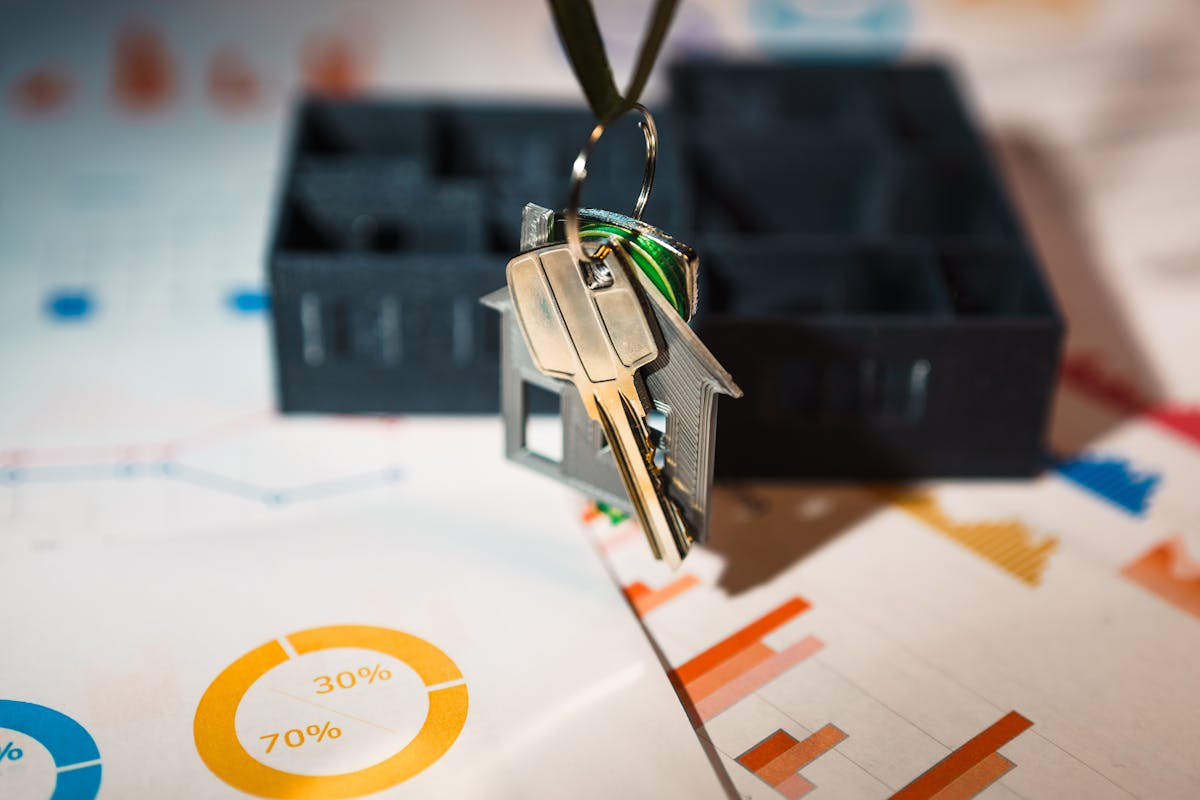Here Is How Landlords And Property Owners Should Handle The Issue Of Rent During The COVID-19 Pandemic
The COVID-19 pandemic has turned every facet of American life upside-down, including how – and when – landlords and property owners should collect rent. Many landlords in California are struggling to figure out how to handle rents in a post-Coronavirus world. That is why D&R Legal Process Service has created this helpful “how-to” guide for landlords. One thing is for certain: the changes brought about by the virus will likely affect the rental industry for years. That is why we recommend that landlords follow these “best practices” for the foreseeable future.
Landlords Should Exhibit More Empathy
If there is one silver lining about the COVID-19 pandemic, it is that the virus has made Americans more empathetic. We believe that this empathy should extend to the landlord-tenant relationship as well. Landlords should acknowledge that tenants are going through a scary, unprecedented time. Also, keep in mind that a significant percentage of renters in this country work in some of the most hard-hit industries, like the service, retail, and restaurant/hospitality industries. Add to this the fact that most renters lack sizable cash reserves to draw from, and the picture looks pretty grim.
I can’t stress how important it is to empathize with your tenants situation. In the traditional Carrot and Stick methods normally employed to get the rent paid, this is not the time to try to take a hard line. Your most powerful “Stick” has been taken off the table for a significant amount of time in the future as you will see in the Eviction section of this guide. That is why we recommend that landlords do the following:
- Increase communications with your tenants
- Listen to your tenants
- Express concern and understanding
- Work with them to come to and understanding and a plan of action. It might even be in your best interest if you have the capabilities or access to the right people to help your tenants access the money and programs that will help them pay the rent
Your rental property is an investment, that means the general boilerplate investment disclosures should apply…
- “Not FDIC Insured, No Bank Guarantee, May Lose Value. Past Performance is Not a Guarantee of Future Results.”
Many of your tenants will have their own investments in the form of 401(k)’s and Roth IRA’s, those investments have gotten hammered during this situation, the rent not getting paid on time or at all is your version of the downside risk of investing in real estate. As a landlord or property manager you have taken on the added responsibility and duty to deal with and care for your tenants, in the hope for a higher upside, otherwise you would have just invested in a REIT, through your Schwab account.
That being said, this is a difficult time for landlords as well, as mortgage payments are still due, if not right this moment, certainly in the near future. You are likely in the exact same spot as your tenant to YOUR landlord, the bank or mortgage holder. If you look at this post from your tenants perspective, you will see what actions you can take when dealing with your ‘Landlord.”
So how is a landlord supposed to balance empathy for tenants with their own financial security? More on that below.
Explain That The Rent Still Needs To Be Paid
The country (and world) has weathered catastrophes and periods of economic turmoil. Through it all, the rent will still need to be paid eventually. Empathizing and communicating with your tenants means letting them know about your situation as well. Let them know that you understand and that you’re in the same situation and owe money to the bank and have bills of your own. You want to let them know that you are still providing the same services for them now as you were before the lock-down and that all costs money.
I would not bring up that you depend on rental income for your livelihood, we have already seen a large backlash against rent payments and landlords early on in this pandemic. It’s not likely to get any better soon, without landlords as a whole showing that they are humans too, all in this together and not just another creditor. Rent Strikes will continue to happen and your tenants may feel they are part of that community, unless you show that they are part of your community as well.
Current and future changes to the laws governing tenant-landlord methods might make it more difficult to collect rent using more traditional methods (such as late fees and eviction hearings). Still, as the landlord, it is your responsibility to make sure your tenants know that the rent is still due. If you do your job right, your tenants will not be able to use the excuse, “I didn’t know I still had to pay rent.” We recommend being empathetic, but firm, with your tenants.
Offer Several Payment Options To Your Tenants
One of the best ways to make things easier for you and your tenants is to provide options when it comes to paying rent. We find that, in difficult times such as these, many tenants are unaware of all the ways that they can come up with the money to pay rent. Some options that you may want to suggest to your tenants include:
- Paying rent via credit card
- Government assistance
- Private company grants
- Borrowing money from a friend or relative (This one may not work as well now as it has in the past or will in the future because we are all in the same situation together.)
As a result of the COVID-19 pandemic, many government programs (both federal and state) are springing up that are designed to help Americans with such issues as rental and bill payments. If you want to be a helpful, proactive landlord, we recommend that you stay informed of relevant bills and programs, share them with your tenants. We can almost guarantee that some of your tenants won’t be fully aware of all the state and federal help that is available to them. That is why we recommend displaying this helpful information on a bulletin board in your office, mailing it to tenants, or posting it on your website. You can also expect D&R Legal Process Service to write informative posts about changes to the rental laws in California.
We also find that many Americans are unaware that they can pay rent via credit card. You may want to inform your tenants of this as well (if you do not allow credit card payments, we suggest changing your policy, at least for the time being. Remember, flexibility will help you and your tenants get through these difficult times). Incidentally, paying the rent with a credit card is a great way for your tenants to rack up reward points and cashback bonuses from credit card companies that offer such incentives. This is an added benefit that your tenants should be aware of. As an added incentive, many California landlords are even offering to pay the fee associated with credit card payments.
If your tenants are struggling to pay the rent through any of the methods above, you may want to suggest that they borrow money from a friend or relative as a last resort. Again, these difficult times require us all to chip in and help each other. In that spirit, you may also want to consider rent deferral as an option for your tenants.
Rent Deferral Plan
Many landlords in California are offering rent deferral during the COVID-19 pandemic. We would normally recommend that you work with tenants to set up a rent deferral plan as an absolute last resort, a “worst-case scenario” solution but these are not normal times now are they. You will see below in the Eviction section why this has changed.
Even if you are planning to allow tenants to defer rent, you should still let them know that the full rent payment is due. However, if your tenants have no other way to pay rent during this difficult time, you can work with them to set up a rent deferral plan. What should a rent deferral plan look like? We have a few ideas:
- Written documentation
- Determine what the tenant is able to pay
- Have a backup plan in place (including eviction)
Perhaps it should go without saying, but whatever rent deferral plan you come up with should be written down and signed by all parties, to eliminate any confusion. Having a written agreement not only ensures that everyone is on the same page; it shows your tenants that you are serious about working with them regarding their rental payments. Before drafting your rent deferral plan, you should work with your tenant to determine how much of the rent they are able to pay for the current month. They might not have enough money to pay all of the rent, but they may be able to pay half of it. If so, accept partial payment and work up your rent deferral agreement.
For those who are unfamiliar with the concept or execution, a rent deferral plan is an addendum to the lease that allows tenants to pay a given month’s rent over a ten-month period. For example, if the monthly rent is $1,895 and the tenant can only pay half, the remaining $947.50 will be split up into equal payments over the next ten months, so that they will pay $1,989.75 per month until they are current on rent. (be sure to inform your tenant that their rent will increase for the duration of the agreement). The rental deferral can take effect on the month you designate. You may opt to start accepting deferred payments two months out if you want to give some leeway to struggling tenants.
So, to go back to our first example, if your tenant can only pay you $947.50 of the $1,895 that is due at the start of the month, you could accept a partial payment for that month, charge them the usual rent of $1,895 the next month, then up the rent to $1,989.75 for the next ten months after that.
Another option is to make two payments, the full and regular rent payment, mine is due the first of each month and a second payment later in the month, weeks 2 through 4, to cover the portion owed on the previously deferred rent payment, this will help your tenant with their own monthly cash flow and may help you keep track of what is owed, especially if they find that they can make a larger payment, in order to pay off the debt faster once everyone is back to work and out of lock-down.
But what if your tenant can’t afford the rent for several months in a row?
It’s gotten pretty clear at this point that we are in unprecedented times, the “Shelter-in-Place” in the San Francisco Bay Area began on 3/17/2020 and is currently still in place as I write this over 7 weeks later. Millions of people have lost their jobs or have been furloughed and are not receiving paychecks, business income is way down for most and the fact that a majority of Americans barely have an emergency fund, let alone a meaningful savings is having an effect on everyone.
The federal government response and programs have been inept at best and the state of California can’t print money but has certainly tapped into the states own emergency fund and really only has the ability to pay unemployment to those who qualify, defer tax payments to later in the year and pass “Temporary Emergency Covid-19 Laws.” The California Judicial Council has done what it can to protect tenants, recently passing several Covid-19 Emergency Court Orders and will continue to do so in the coming days and months.
- One option is to continue adding to the Rent Deferral Plan above, lumping it all together and having the tenant pay it off over a longer period of time. What makes this different than a tenant not normally paying the rent is this State of Emergency will eventually have an end date. At that point the clock will start ticking for tenants and landlords alike.
- Depending on your financial situation as a landlord, you could forgive part or all of the rent during the pandemic. Figure out what your minimum needs are and make a deal with your tenants, once everything is open and back to business and the damage is known you will have a clearer picture of the tenants future. You’re doing this with the belief that dealing with a previously good or stellar tenant, who is now able to make full rent payments again will likely stay with you longer and will reciprocate the goodwill you’ve showed them. Not to mention the out of pocket costs alone to get the unit ready to rent and all the other costs associated with marketing and finding a new stellar tenant to rent to, assuming the tenant moves out willingly.
- Holding out until the eviction process is back up and running, we don’t know how ling this will be but it certainly won’t be soon.
Evictions in California, After COVID-19
This is your backup plan and during COVID-19 you will find out why this is now an absolute last resort, this is a “worst-case scenario” solution and will require you to be very patient. We mentioned earlier, “Temporary Emergency COVID-19 Court Orders,” these are the laws that are currently in place and for the foreseeable future will be what governs the California Eviction Process.
Let’s dive into a few of the important ones, shall we.
The first law we are looking at is not “Temporary” or have anything to do with the pandemic at all but is having huge impact on how court closures went into effect and how long before evictions can begin to take place. It went into effect September 2019, so it is relatively new and from my conversations on the phone with landlords, it’s not well known yet.
California AB 2343 made significant changes to CCP 12-12c, this is the law that defines how much time the tenant has to reply to a California eviction document and how those days are counted. In essence it changed response times for 3 Day Notices and Unlawful Detainer documents from “Calendar Days” to “Court Days.”
The courts are all closed as a “Court Holiday,” do we see now why AB 2343 will have such a big impact on the eviction process. That means if you served a 3 day notice after the court closures your three days to pay rent has not started. Think you need to read our post on how to count court days yet?
You’re going to see this statement in a lot of the emergency court orders, “90 Days after the Governor ends the State of Emergency,” what this means is nothing in the Eviction Process is going to start until 90 Days after the governor signs a peace of paper stating the COVID-19 emergency is over. It’s not clear to me when that could be but I’m doubting its going to be the day the lock-down is lifted, so this could go on for a few weeks or months past the lifting of the Shelter in Place Order. Then your 90 Calendar Days will start counting.
All California Evictions are Suspended. The court is not allowed to issue a Summons on an Unlawful Detainer Action, until 90 days after the end of the emergency. I have seen an efile court recently file all of the documents in an eviction case, except for the summons. That summons is what makes an eviction binding, it lets the tenant know when they need to respond to the court. Your documents are worthless without it. It is believed that the court will issue the summons once the time limit is lifted, hopefully automatically but you never know with the court. You might have to resubmit the summons as a separate filing later.
The court is not allowed to Enter a Default Judgment in an Unlawful Detainer Action, until 90 days after the end of the emergency and if your tenant were to answer your eviction notice, it the court will not set it for trial for at least 60 days.
All California Judicial Foreclosures are Suspended. This is good news for landlords who are not able to pay the mortgage because the rent is not being paid and you too will have the protection until 90 days after the state of emergency has ended. Foreclosures generally take longer to begin, process and in many cases can be delayed months and up to a year. You should have time to get back on your feet and should begin planning that now if you have not started yet.
For many landlords in California, the backup plan will include evictions… eventually this will be an available option but if you have the ability to use;
- Empathy
- Payment Options
- Flexibility
- A Rent Deferral Plan
In order to cut a deal that can get your minimum needs met, then you should probably take it, rather than holding out for the Eviction Process to get rolling again. It’s guaranteed that will be months from now. “Money Now is worth more, than Money Later.” – Ramit Sethi
D&R Legal Process Service, LLC. Will be Here to Help You With Your Eviction Needs in the Months to Come
If all feasible options are exhausted and you need to evict, call D&R Legal Process Service, LLC. at 1-510-797-9996. We have been helping California landlords serve eviction notices for over 35 years.
We can serve the following landlord/tenant notices in California:
- 60 Day Notices
- 30 Day Notices
- 3 Day Notices
- Unlawful Detainer
No one likes to evict tenants, especially during uncertain economic times. Serving these notices is one of the most difficult parts of being a landlord, but we can handle this unpleasant task so that you don’t have to. We know the eviction process inside and out. We also pride ourselves on professionalism and will help you move through each step of the eviction process correctly and legally.
This is why so many landlords have come to count on us for your eviction services in California. Frankly, these are uncertain times for everyone. During uncertain times, it helps to work with a company you can trust. D&R Legal Process Service is that company and with over 173+ 5 Star Reviews, Across 5 Different Review Sites we should be your process server of choice.







